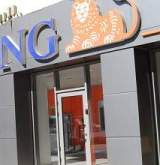Lesson 1: Advantages of Internet advertising
Radu Ionescu (radionescu.ro) managing partner at Kinecto says “the internet is the best epilogue of a consumer’s experience gained through ATL or BTL”. “Obviously, there are particular businesses that just don’t fit so neatly in other media than internet (tourism for example), same as businesses for which marketing campaigns achieve greater success in traditional media (detergents for instance)”, said Ionescu.
Another advantage associated with advertising online is that marketers can tailor their campaigns while in progress, instead of at the end of it, said Adrian Stanescu (LinkdIn profile), country manager Thinkdigital Romania&Moldova.
“Real time tracking of the success rate and reach of electronic ads allows marketers to focus on which ads really work. As for online projects targeted on lead generation, marketers can now track down the number of consumers that completed the online request form, as well as those who have been exposed to the message and accessed the client’s webpage and registered. Of all the campaigns I’ve carried, I noticed that at least 50% of the leads are generated by the users exposed to the message, without returning to the landing page immediately”, said Stanescu.
A smart online campaign can be much cheaper than a TV campaign. For a lower budget, marketers can reach a similar audience, says Adrian Mihaltianu (LinkdIn profile), Business Intelligence Consultant at MB Dragan.
“Budgets too low for TV ads can very well shift to web. As for print media, the online medium is not only cheaper, but more versatile. The internet offers a wide range of multimedia tools, especially for branding and awareness campaigns, that don’t exist in print. Let’s remember that advertising is first of all communication, and the World Wide Web opens up the most communication possibilities, and interactive capabilities accordingly”, Mihaltianu added.
Lesson 2: How much should a marketer spend on online advertising?
“If you have a super-smart phone that you want to sell for just a nickel, you don’t have to spend a load of money to do it. It’s enough to set a Facebook status and there you have it. But if you want to sell a clunker for a billion dollars you’d really need to sink some money to talk people into buying it”, says Bogdana Butnar (photo) (bogdanatheplanner.blogspot.com), managing director at MRM Worldwide Romania.
Irina Morosanu (LinkedIn profile), business affairs manager F5 says the success of a campaign does not necessarily rest in the size of the budget. “A generous budget does offer a better coverage and reach, but what you also need is to set out your target segment, a good message tailoring and great creativity for eye-catching advertisements”.
Adrian Mihaltianu recommends an online advertising mix, rather than focusing on only one web tool. A banner ad is generally more expensive than a PPC campaign, although lately, there have been accepted banner ads loaded on a web page on a pay per click basis.
“With a lower budget (0 - €2,000), marketers can create an event interesting enough to be recorded (flash mob, a competition, an original outdoor campaign), and then uploaded and shared by internet users. Furthermore, it can be created an interactive website especially for the campaign, a website that would generate images in high-aspect ratio shape that can afterwards be updated by the salespersons.
“Unfortunately, most of the companies tapping the online environment for advertising their product or service go after the banner ads: the bigger the better, which is both expensive and sad. And non-interactive”, says Adrian Mihaltianu.
Lesson 3: How long should an online ad campaign last?
Irina Morosanu (photo), F5: The duration of a campaign is like the ad spending – it depends on the type of the campaign, aims, product, and expected feedback from consumers. And that is the advantage of web advertising; it provides you immediate feedback that enables you to adjust the duration of a campaign accordingly.
Mugur Patrascu, iLeo: the duration depends on how long you need to achieve your objectives.
Radu Ionescu, Kinecto: It depends on the objectives and the target segment of the campaign. A campaign usually lasts 4 to 6 weeks.
Adrian Stanesc, ThinkDigital: The duration of a campaign depends on the budget availability and affiliates. If the campaign includes websites with tens/hundred million impressions per month, the budget should be raised or spent on a short period of time.
Adrian Mihaltianu, MB Dragan: The duration of an online ad campaign follows the same rules as a regular campaign according to its purposes: sales, awareness, teasing, etc. Therefore, the duration depends on the sales cycle, in the end. The interesting thing is that in the web, you can create special website, and then build a community around your product (a car for example), with no time limit. This website can become itself a good source of information and of special campaigns and turn it into a place where you can interact with your clients.
Cristi Marinescu, Splendid Interactive: The duration of a campaign depends on the type of the campaign. For example, a teasing campaign can last from few days to two weeks, while for a new product or service, it can last more than a month.
Bogdan Nitu, Webstyler: Most of the online campaigns in Romania are only complementary to the campaigns carried out on other media, and hence it will last accordingly. I think that in the online medium, a brand presence must be year-round in one way or another.
Bogdana Butnar, MRM Worldwide Romania: It depends on the results: you set a click or lead or impression limit, a comfortable level of awareness and you stick to the campaign until you reach these goals. Normally, this limit should be reached in a decent period: you don’t wait 3 months to get 1000 leads (unless you sell something for a niche, like… I don’t know… tanks), because in three months, the offer and the design of the advert is obsolete. We don’t have to be afraid of working towards immediate goals. Same as we don’t have to be afraid of changing our campaigns if they don’t work well.
Lesson 4: Where to advertise online?
On the other hand, Bogdan Nitu (LinkedIn profile), managing director at interactive communication agency Webstyler, says that an effective ad planning should include websites with relevant page content. We come across with a variety of behavioral patterns, and the web sites for carrying the campaign are selected according to the feedback we expect from the users.
Adrian Mihaltianu says the biggest mistake in ad campaign planning is choosing a website that his client or his boss usually accesses. “Or general websites, with million of users and views that are already suffocated with adverts”, said the representative of MB Dragan.
A smart marketer will firstly look at the keywords people use to search for the product or service he wants to sell, and then he will ask for the user demographics of the niche sites. The marketer will then analyze the content quality elements and traffic data (bounce rate, unique visitors). Furthermore, if he chooses social networking sites, he would have access to the consumer profiles.
“After six months of trials, each advertiser will create a «must-have» list and a «websites to watch» list”, said Laurentiu Pop (LinkedIn profile), deputy managing director Httpool Romania.
Lesson 5: How to choose the best ad format?
“One to one communication can work well, but so can banners. Since users are anything but conservatory, I’ve noticed users tend to accept new formats. In 2010, it seems that this will reflect over social networking sites”, he said.
According to Mugur Patrascu, there is no hierarchy of which formats work well in the online environment and which don’t. Rich media formats seem to be the next big thing.
In general, the most effective ad formats are the new ones because they drum up users’ interest, says Adrian Stanescu.
“Flash creatives or interactive formats will always return better results than the standard format categories. Generally speaking, leaderboards are the most effective formats, because they enjoy a bigger visibility”, said Stanescu.
However, Adrian Mihaltianu says advertising agencies used to TV and print advertising “continue to create junks for Romanian display”, based on the principle “the bigger and the more animated, the more expensive and inefficient”. Interstitials (web page advertisements that are displayed before or after an expected content page) overlays (banners displayed concurrent to the page content) and other similar formats that apparently return high click rates in reality “they just annoy the users”.
Lesson 6: How to measure ad campaign effectiveness?
“For example, what percentage of my target segment have I reached compared to the resources I’ve allocated? If I have been smart enough to focus my campaign on lead gathering, how many have I managed to gather so far and how many have been reflected in the sales volume? And then it is essential to identify the impact each channel used in online ad campaign has had”, said Mihaltianu.
Measuring an ad campaign effectiveness is different from one company to another and is focused on a different set of objectives. For a brand awareness campaign, a marketer can track the number of impressions, or the time users spent on the website.
For sales increase, all stages leading towards sales growth must be measured: impressions – portfolio – sales. What’s important in both cases is to make return comparisons for ad spending, namely an assessment of investment efficiency centered upon objectives, formats and results, Mugur Patrascu added.
Lesson 7: How to optimize your ad campaign
“In a four-week campaign, you can make an adjustment every week (choosing the ad that works well), you can change the media plan (move the campaign from one section to another, or even from one page content to another) or the ad format (remove the ad formats that don’t work)”, said Ionescu.
Adrian Stanescu recommends the use of a mix of ad formats and graphics. This way, if the performance of an ad is poor, it can easily be replaced. “This is the key: updating formats, refreshing graphics and switching to other web pages which can be done during the campaign, before exhausting the ad budget. This way, you can find an efficient mix on time”, said Stanescu.
According to Bogdan Nitu, optimization is one of the most challenging tasks and can only be undertaken by experienced ad persons. “Optimization is above all, an immediate interpretation of consumers’ feedback towards the campaign, and advertising persons must come up with feasible solutions at the same time. Experience is the keyword”, says Nitu.
Lesson 8: When to run online-only ads?
On the other hand, Adrian Mihaltianu said a marketer can always run an online-only ad campaign especially if the ad budget is too tight to run print or TV ads.
Costs depend largely upon the type of the campaign. “Go for a PPC on search and content campaign and you’ll achieve surprising results with only €1-2,000. And if you update your keywords lists effectively, you’ll attract more viewers to your website with as little as €0.01”, said the representative of MB Dragan.
The impact does not rely solely on the campaign, but also on the landing page, the place where you direct your customers after interacting with the campaign.
Lesson 9: How to stimulate and use user feedback?
“But to increase users’ loyalty you must be respectful and provide personalized projects”, says Hereux.
“Users are most of the times stimulated by simple things, such as interaction. As a user, just speaking your thoughts on websites or forums without being answered is just sad. But if someone does reply, you get the feeling that there are persons behind the online project and that these people actually care. Either way, the feedback you get from a user is the most important: they are the ones telling me what does and does not work well”, said Bogdana Butnar.
User feedback can be simulated in many ways, social networking sites for example, Irina Morosanu said. “Starting from the feedback of the users, a marketer can tailor the message of the campaign, can optimize it and remake the split between certain formats, improve the end product”, Bogdana Butnar added.
Lesson 10: How to increase users� loyalty?
Mugur Patrascu, iLeo: With lots of money and attention: these two complement each other. When we have money, we pay scant attention to them, but when we don’t have money we devote as much attention as possible. Most of the times, the attention part works better when it comes from them, as it is more sincere.
Adrian Stanescu, ThinkDigital: Social networking sites




























































![HR [PLAY] Tech Workout - 11...](https://www.wall-street.ro/image_thumbs/thumbs/973/973fe0a3888d417feff63de42e814180-260x260-00-65.jpg?v=1713566362)










